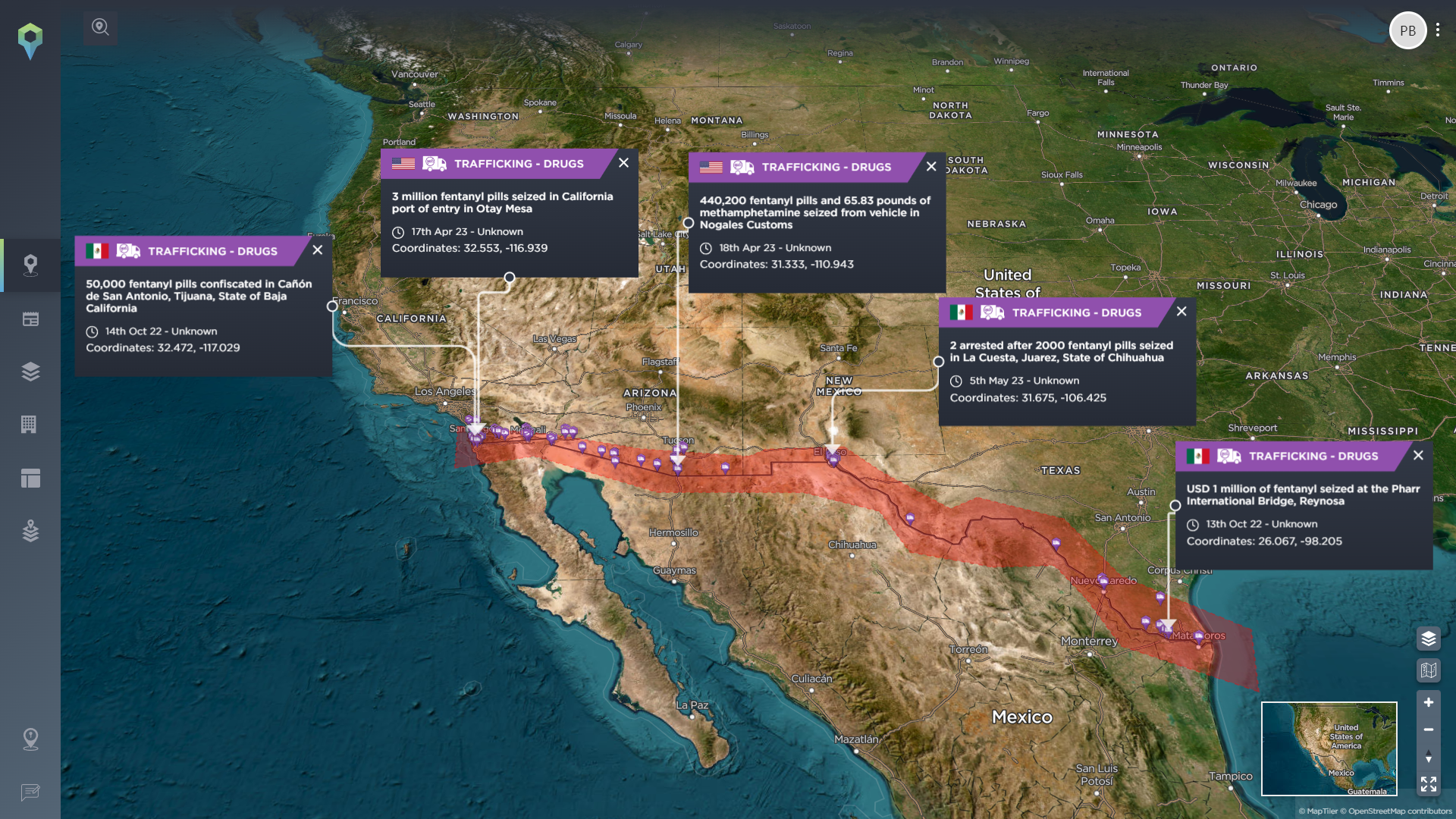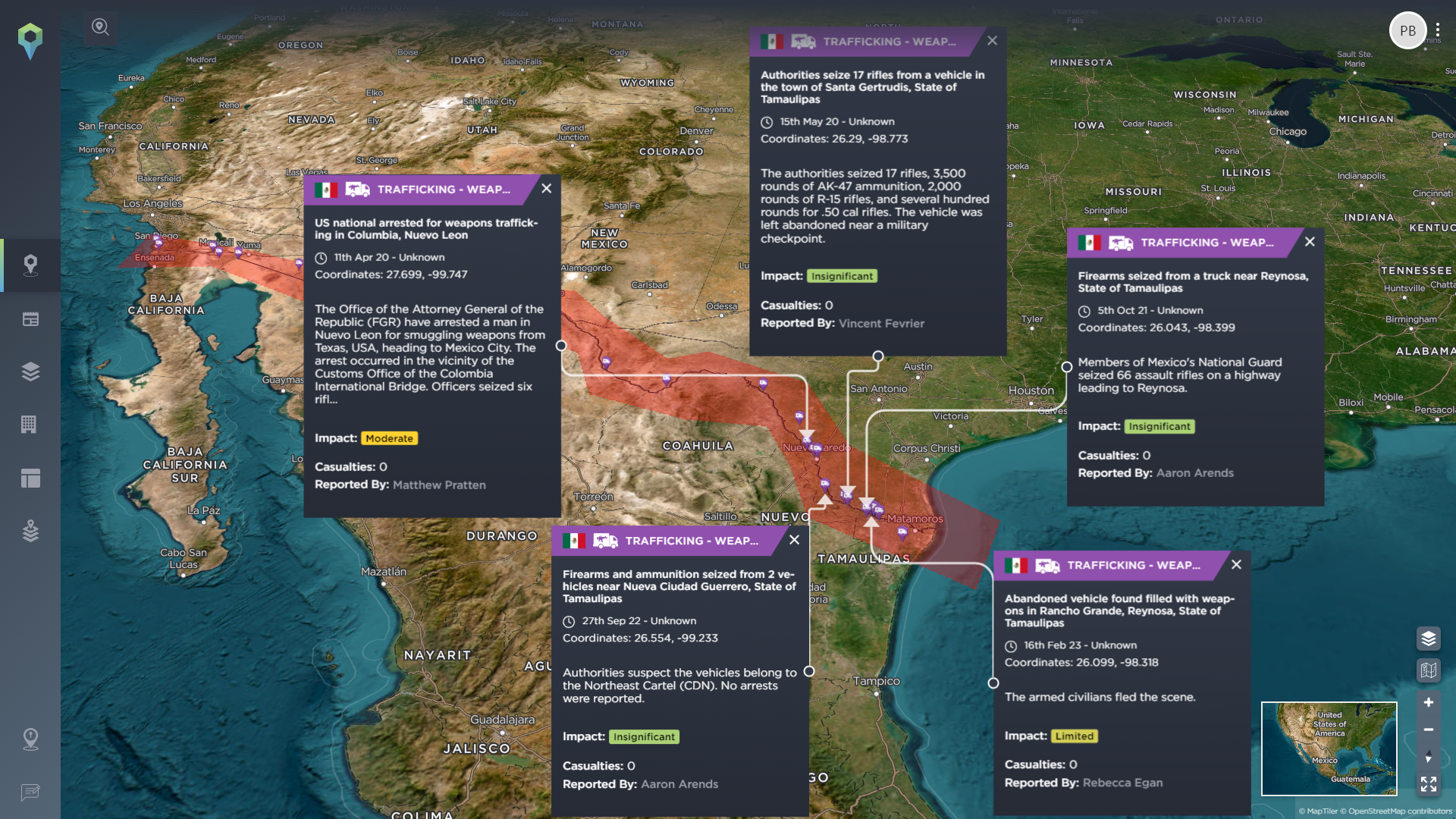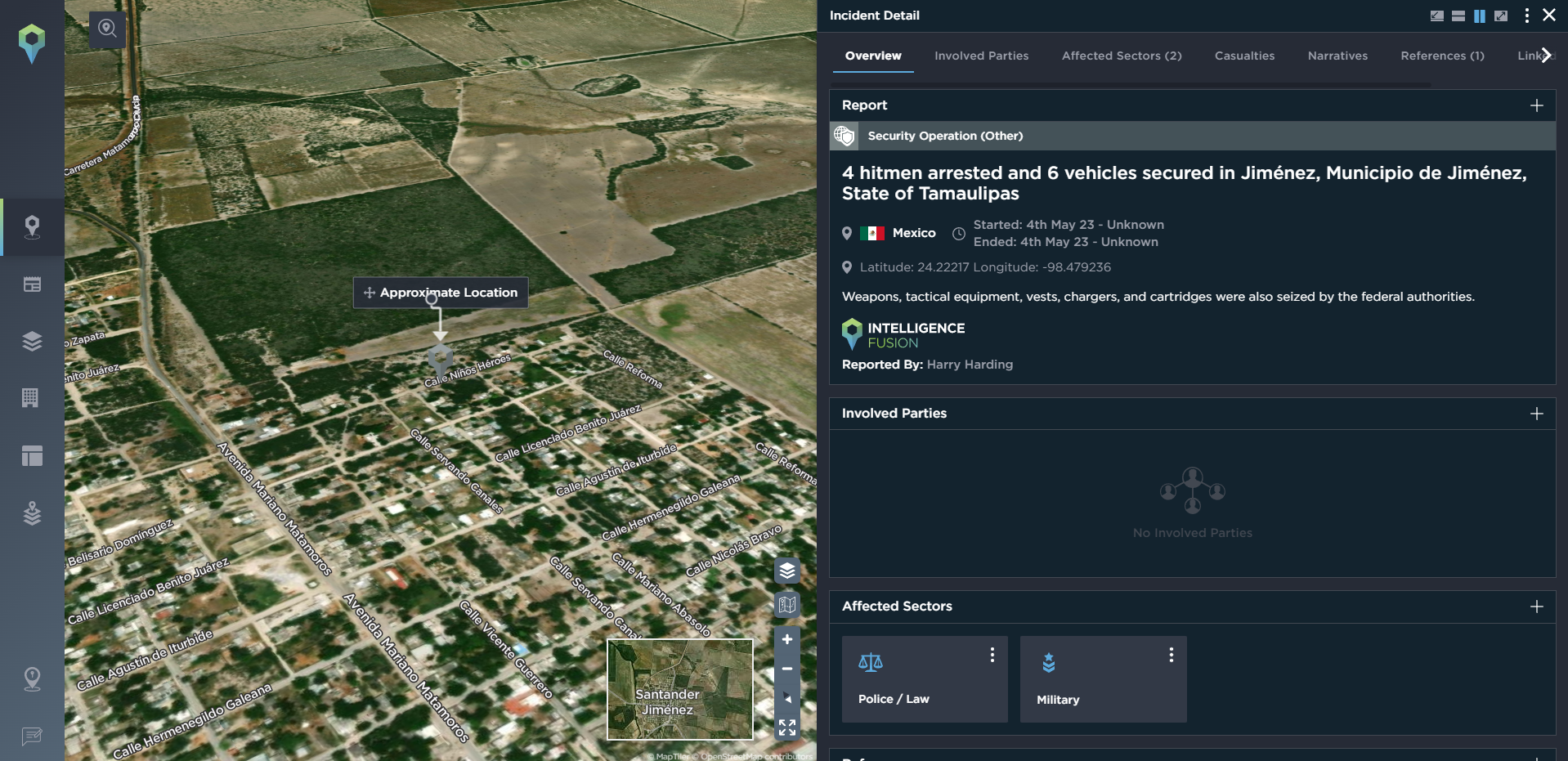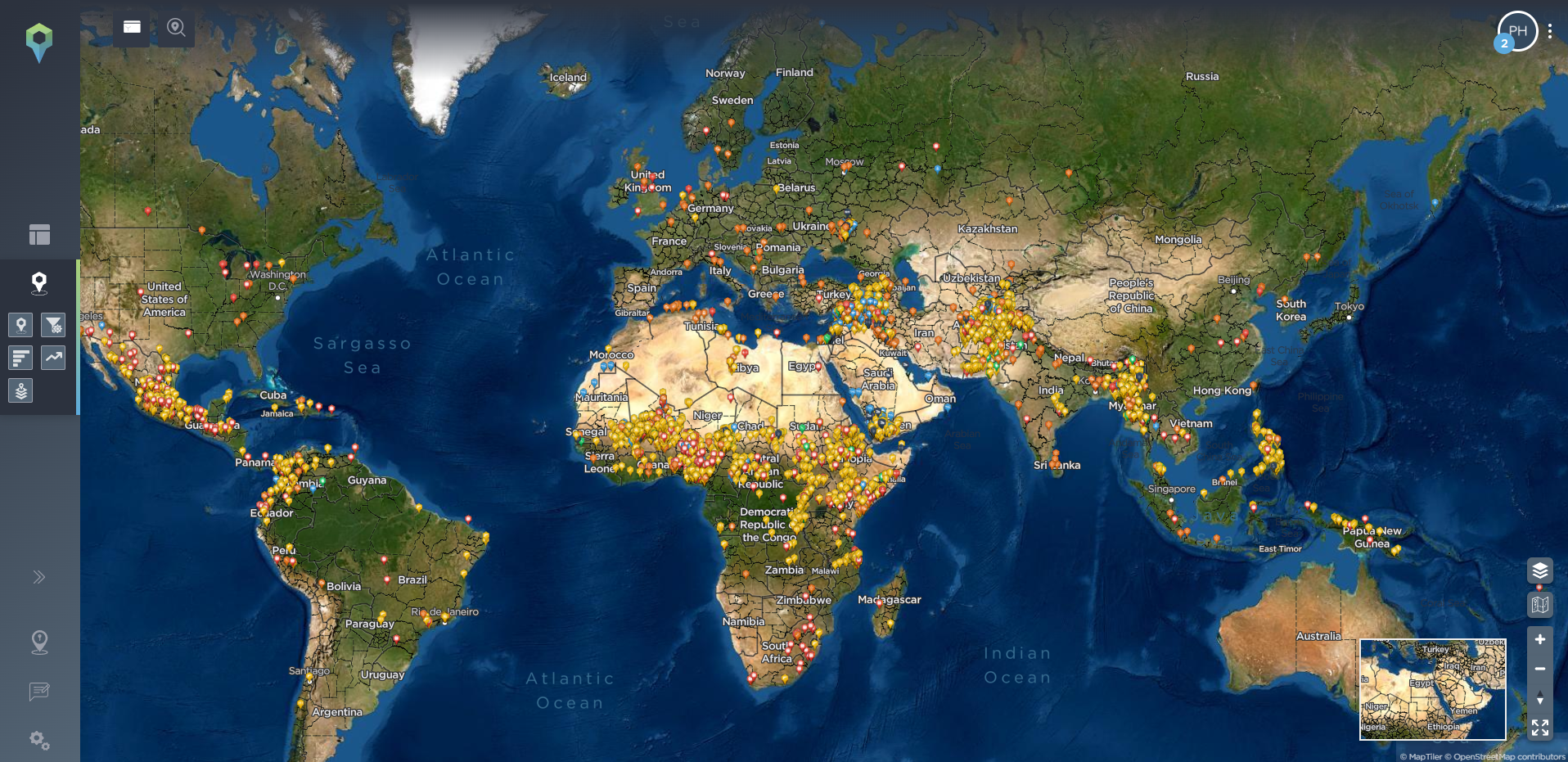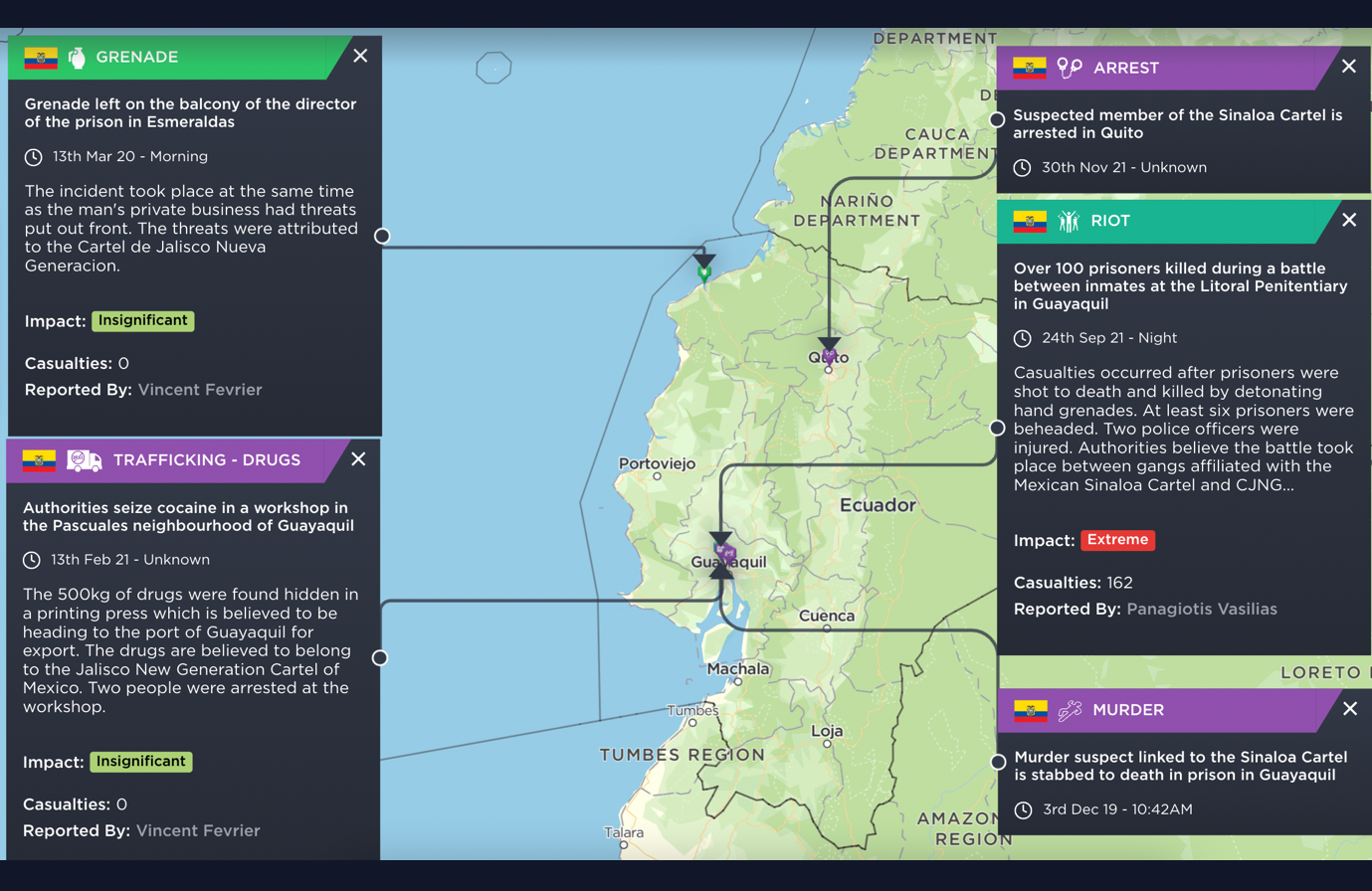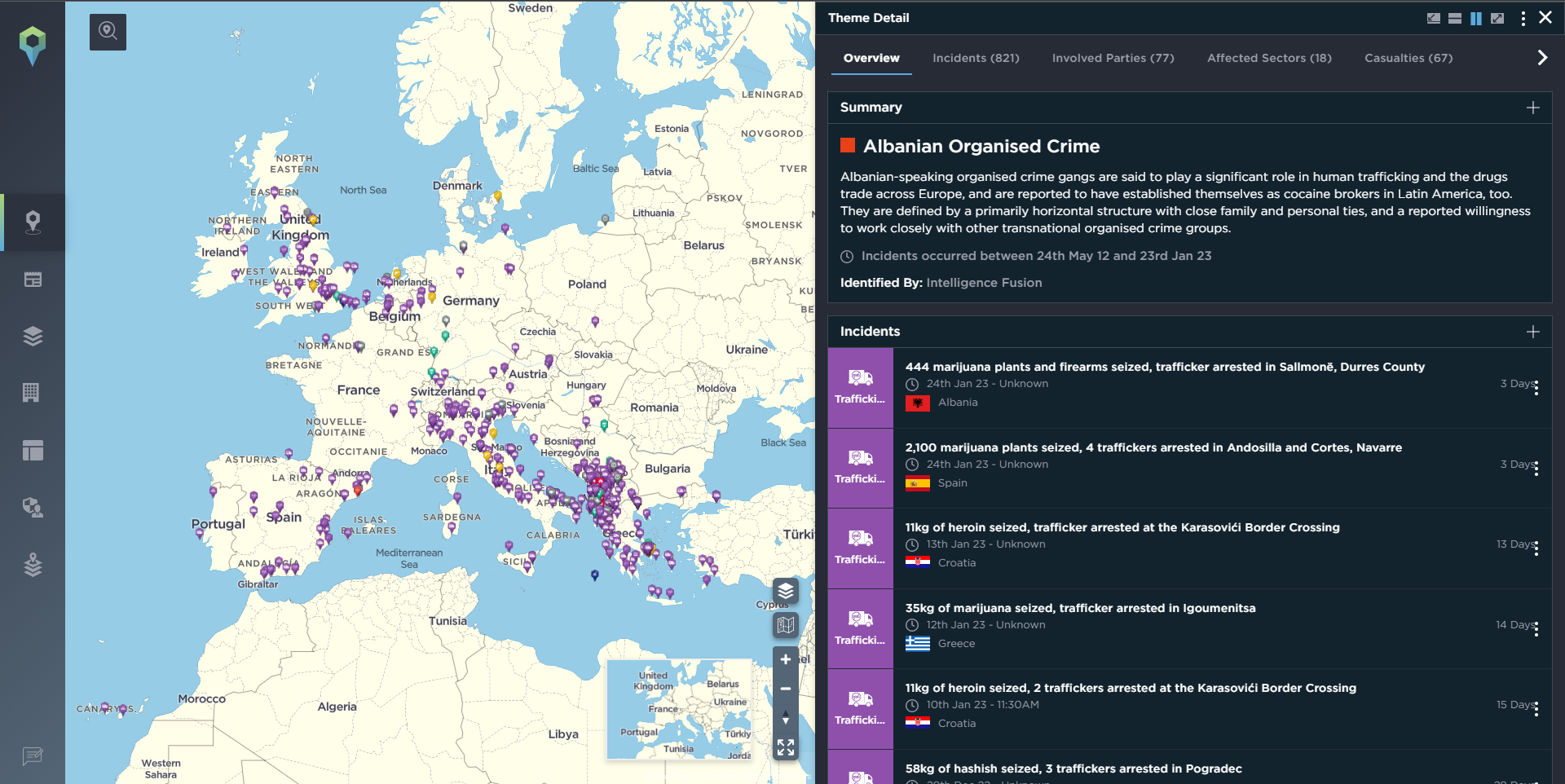Mexican cartels, US guns? Arms trafficking and the Mexican cartel arsenal
Synthetic drugs such as fentanyl continue to flow over the US-Mexico border, leading to recriminations between the US, China and Mexico governments. But the violent Mexican drug trade is also fuelled by a ready supply of weapons flowing in the other direction. So what weapons do Mexican cartels use? And where do they get them from? We look at the supply of US guns across the border and the arsenal of weaponry amassed by Mexico's cartels.
Mexico, the US and China have become embroiled in a myriad of accusations over fentanyl, a deadly and highly addictive synthetic opioid. The US has accused China of providing precursor chemicals to Mexican cartels, whilst Mexico has accused the United States of indirectly arming the cartels. As Mexican security forces continue to intercept packages of drugs at ports, dismantle cartel operations and seize weapons, this drug war has increasingly become a regional conflict in the Americas. It has also raised questions about the relationship between this violent drug trade and ease of access to American weapons.
The Sinaloa cartel, “El Chapo’s” sons, have revitalised their father’s violent drug empire that was on the brink of collapse and have diversified the business by embracing synthetic drugs, like fentanyl. This has made them some of the most wanted drug lords in the world, with bounties of $10 million each. Despite this, fentanyl continues to flow north, with the US border agents seizing over 5,130 pounds of fentanyl in February and March 2023. Ovidio Guzman was arrested in early 2023. The three other brothers are still at large.
The Sinaloa Cartel highlights starkly how Mexican cartels have acquired a broad range of weaponry, including assault rifles, grenade launchers, drones, anti-personnel mines, anti-tank weapons and grenades, from Central American governments. The illegal markets providing these weapons originate from other countries such as China, Russia, South Korea, and South Africa and even Europe and Israel. However, the United States remains the biggest source of weapon imports. According to the GAO, 70% of firearms confiscated in Mexico between 2014 and 2018 that were submitted for tracing originated from the US.
The US guns arming Mexican cartels
The influx of sophisticated weaponry illicitly transported through the permeable border of the United States has raised concerns among Mexican authorities, with few firearms being as potent as the semi-automatic rifle known as the M82, produced in the US. This particular weapon, increasingly favoured by influential drug cartels, possesses the capability to easily breach body armour, solid barriers, and even armoured vehicles, as stated by Barrett Firearms, its manufacturer. The Mexican government, in response, has taken legal action by initiating a lawsuit in the US District Court in Massachusetts against the company in question along with ten additional firearm manufacturers, citing the M82 as one of the preferred choices among drug cartels.
Cartels in Mexico typically use a mixture of more well-known small arms from the Cold War (acquired from the Soviet Union during times of “Viva la Revolucion”), such as the AK-47. Kalashnikovs in particular became infamous for their widespread use amongst insurgencies and gangs around the world.
What mostly sets apart the Mexican cartels however is their easy accessibility. These are usually smuggled through the US to Mexico, often enabled by so called “straw purchases”. These smuggled arms will often include civilian variants of M16 assault rifles, referred to as AR-15, produced by the Colt manufacturing company. Despite lacking the standard burst fire modes of their military counterparts, AR-15s are still nonetheless extremely lethal weapons.
Cartels have also been reported to possess American M4s from Colt, which are the carbine versions of M16s. More forms are required to be filled out to purchase these items in the US as a civilian, but it is doable.
One of its benefits lies in the ease to replicate fully automatic weapons through the use of bump stock and other modifications. This has been evidenced by numerous US mass shootings throughout the last decade.
Cartels are also known to use Browning M2 calibre 50 (machine gun) and Barrett M82, more often encountered during skirmishes or ambushes.
The firearms belonging to the AR-15 platform can be purchased pre-assembled in numerous configurations from the civilian market. Unless the serial numbers and branding information are visible on the receiver, determining the specific make is likely impossible. It is worth noting the significance of serial numbers. So-called “ghost guns”, assembled in residences or workshops without assigned serial numbers, lack them, thereby increasing their value in illicit markets. These ghost guns are utilised by criminal organisations in the United States and Mexico.
It is also important to differentiate ghost guns from 3D printed firearms, as the former represents the fourth primary source of weapons, following straw purchases, theft, and private sales, as explained in the book “Blood Gun Money: How America Arms Gangs and Cartels” (2021).
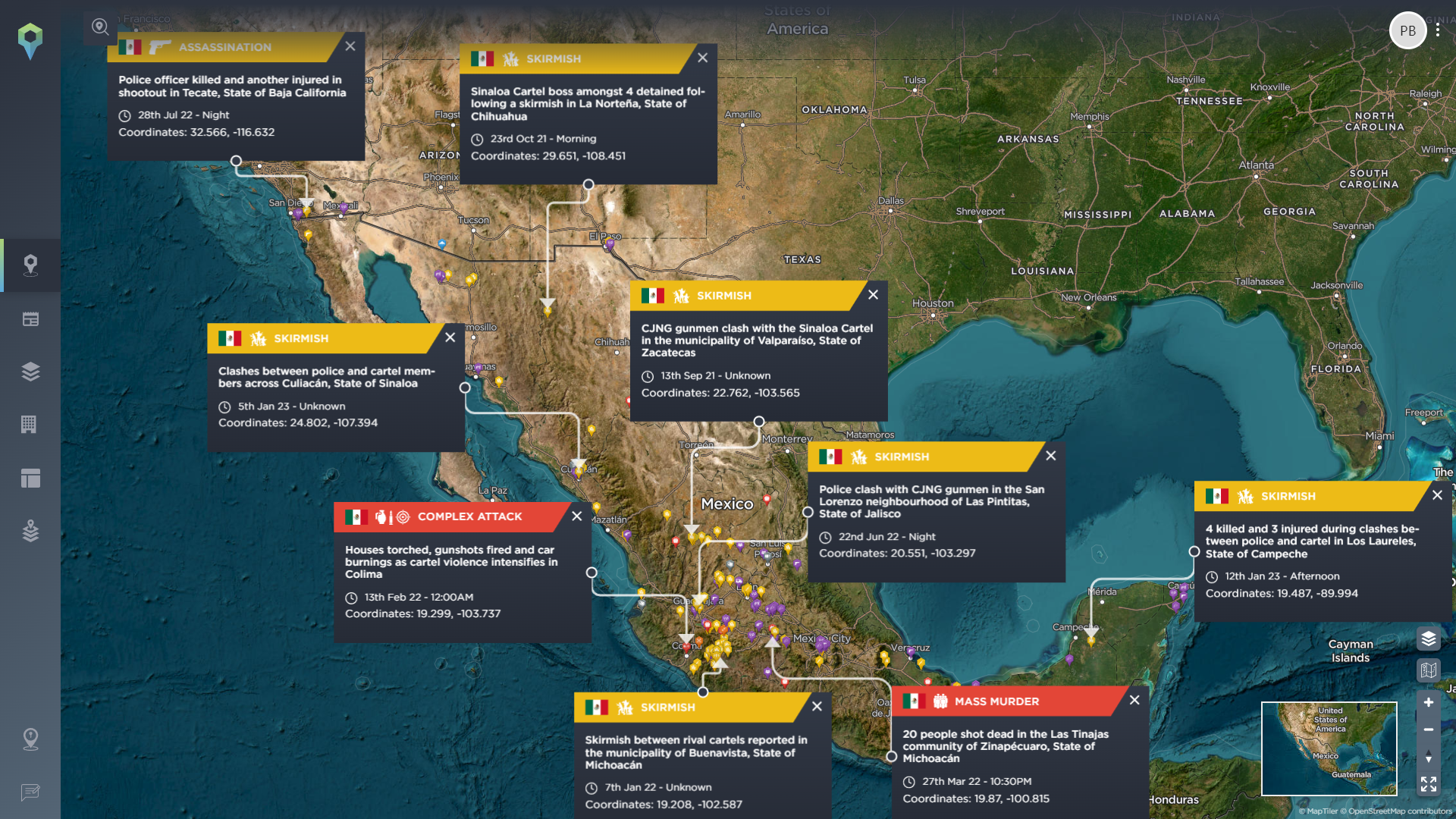
Incidents involving firearms and Cartel Jalisco Nueva Generación and Cartel Sinaloa [Image source: Intelligence Fusion]
Armoured vehicles
Mexican authorities seize armoured vehicles but no further explanation is given and few images are usually provided; the Small Wars Journal establishes that cartels employ improvised armoured fighting vehicles such as the one shown on the left.
The Familia Michoacana is renowned for their utilisation of similar vehicles that, in certain cases, bear their logo for easy identification.
Since 2020, the Cartel Jalisco Nueva Generación (CJNG) has been upgrading their armoured vehicles, transitioning from heavy, low-mobility vehicles to more sophisticated and professionally designed “monstruos.”
In clashes between CJNG and Cartel Sinaloa, High Mobility Multipurpose Wheeled Vehicles (HMMWVs), commonly known as humvee chassis, have been seized. These vehicles have been referred to as “handcrafted” in local news reports; however, other media outlets have raised concerns regarding whether these “monstruos” are manufactured domestically or imported from the United States, given their resemblance to Joint Light Tactical Vehicles (JLTV).
Vehicles and vans often reported in security operations also include Ford Raptors, Jeeps and Chevrolets, among others, which are also used for drug trafficking across the border.
Drones, explosives and other weapons used by Mexican cartels
As the military potential of cartels increases, ‘halcones’ have been replaced by drones. The latter are used to spy on US military personnel at the Mexico-US border, as well as the Mexican army and police. Drones are especially used by CJNG and Cartel Sinaloa, the two cartels focused on the United States-Mexico axis.
The purposes of drones range from off the shelf (commercial type) for smuggling and reconnaissance (suitable for night-time operations) to those that have been turned into IEDs too (also referred to as weaponized drones or bombardiers). Drones are recorded as carrying C4 class explosives.
Insider voices (but officially unconfirmed) in CJNG have claimed that the pieces are bought on the internet and/ or imported from California. These standard but later modified drones are reported to fly explosives as well as drugs (including fentanyl and methamphetamine), a role that granted them the name of “narco drones”.
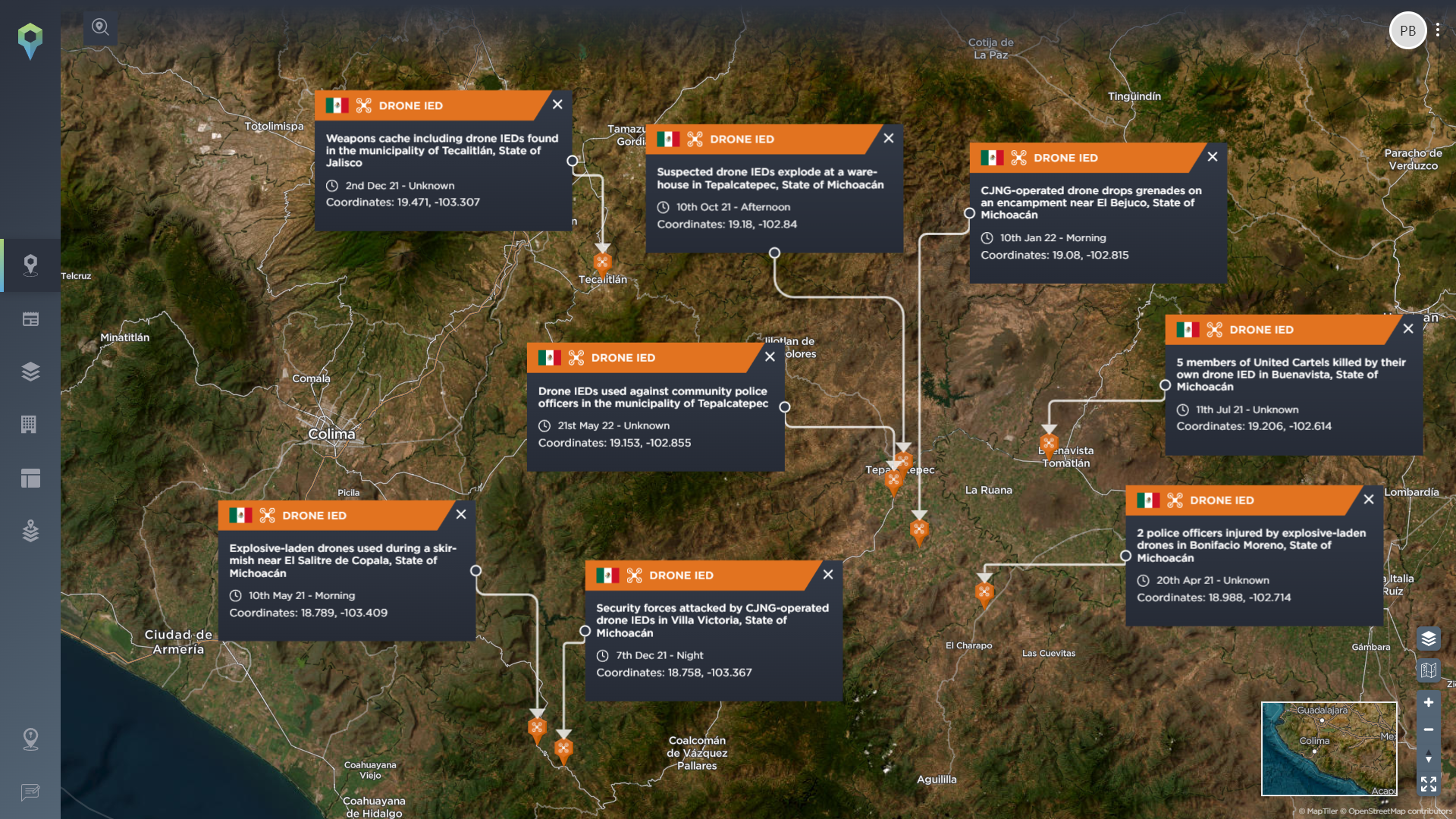
Incidents of drone IEDs being used by Mexican cartels [Image source: Intelligence Fusion]
Another worrisome concern for both civilians and armed forces is represented with anti-personnel mines found in Tierra Caliente (States of Michoacan and Guerrero) and in the escalated version of an improvised explosive device (IED): improvised anti vehicle landmines (IAVMs), which have become in the recent years a widespread weapon between several cartels including Carteles Unidos (CU), Cartel del Noroeste (CDN) and Cártel del Golfo (Gulf Cartel). As part of the military evolution of cartels, rocket-propelled grenades (RPGs) and 40mm type-launched rifle grenades have been efficiently blended into cartel arsenals, according to Robert J. Bunker.
As of 2022, IAVMs are still in the experimental phase, and researchers point out that the mixture of explosives will evolve into “foreign made military grade landmines”.
The impact of modern American firearms being available to Mexican cartels is significant in the context of the drugs war. It provides the Cartels with access to more sophisticated weaponry, with which they can better resist the Mexican police and even military. To address this issue effectively, inter-state intelligence-driven operations are crucial. Ultimately, understanding and addressing the socio-economic factors driving drug demand in the United States is essential.
Intelligence Fusion provides substantial coverage of violence and insecurity in the US-Mexico border, and across both countries. In the past 30 days alone, we have mapped more than 1,500 incidents across Mexico, with in-depth profiles of both countries, and the cartels mentioned in this piece, available to subscribers as part of our threat intelligence platform. If you’d like to find out more about the data that supports our analysis, and how our platform helps security professionals keep their organisations safe, book some time to talk to a member of our team below.

